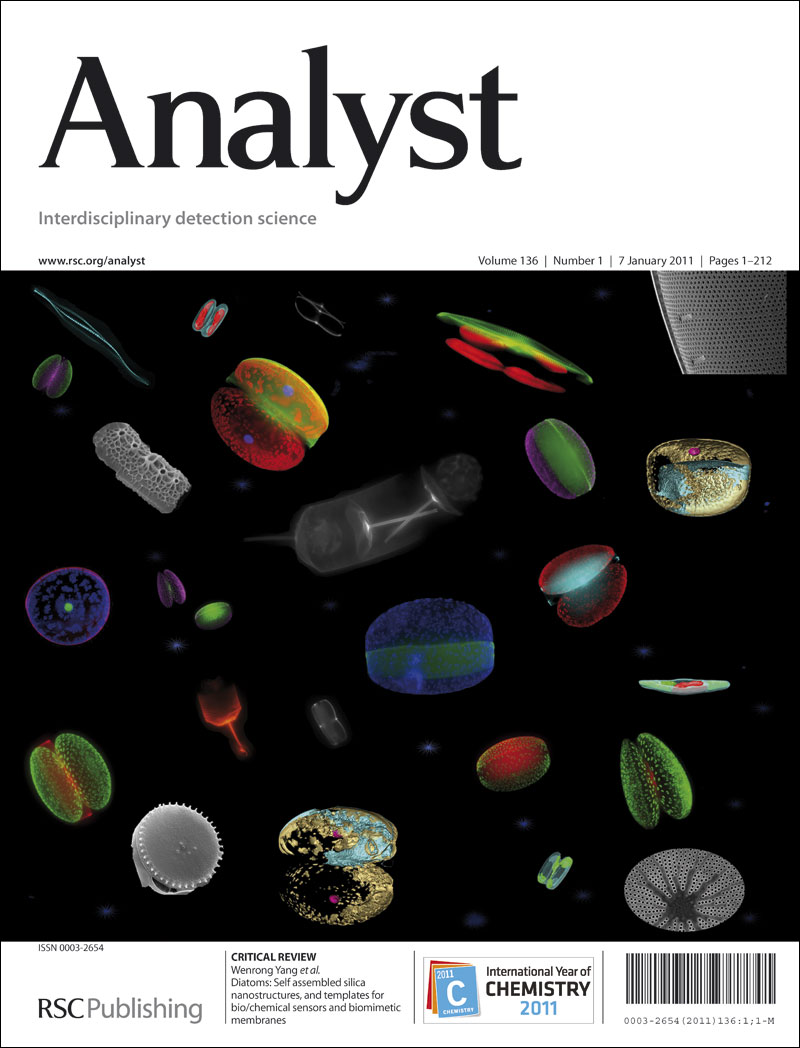中性解吸萃取电喷雾质谱法检测混合饮料生产工艺缺陷
IF 3.6
3区 化学
Q2 CHEMISTRY, ANALYTICAL
引用次数: 0
摘要
采用中性脱附萃取电喷雾质谱法(ND-EESI-MS)对典型的极粘稠食品Mixi饮料模型生产过程中的工艺缺陷进行了检测。采用ND-EESI-MS对不同质量的MiXi样品指纹图谱中代谢物离子与生产工艺缺陷的关系进行了统计分析。分析物的异常信号,如重金属离子或农药的出现,以及有益成分的变化(如。在指纹中观察到的d -葡萄糖)可以作为生产中遇到缺陷的指标。同时,我们定量分析了米溪饮料中重金属和农药残留的浓度,结果显示出较强的线性关系(R2 >;在0.50 ~ 200.00 μ L-1的浓度范围内,重金属与农药残留之间的检测限为0.04 ~ 1.44 μ L-1,定量限为0.12 ~ 4.36 μ L-1, RSD为0.39 ~ 3.66%。此外,与以往的方法相比,通过终端产品分析可以直接检测到生产过程中存在的隐藏缺陷,包括原料筛选、浸泡、提取等,反映了ND-EESI-MS是一种很有前途的粘性饮料质量控制和生产过程缺陷跟踪工具。本文章由计算机程序翻译,如有差异,请以英文原文为准。
Production process defects of Mixi beverage detected by neutral desorption-extractive electrospray ionization mass spectrometry
Process defects in the model production process of Mixi beverage, a typical example of extremely viscous food products have been successfully detected using neutral desorption extractive electrospray ionization mass spectrometry (ND-EESI-MS) without sample pretreatment. We employed statistical analysis to explore the correlation between process defects in the production and metabolite ions in the fingerprints of MiXi samples with diverse qualities, which were acquired using ND-EESI-MS. Abnormal signals of analytes such as the appearance of heavy metal ions or pesticides, as well as changes in beneficial ingredients (eg. D-glucose) observed in the fingerprints could serve as indicators of defects encountered in the production. Meanwhile, we quantitatively analysed the concentrations of heavy metals and pesticide residues in Mixi beverage, and the results showed a strong linear relationship (R2 > 0.99) between heavy metals and pesticide residues in the concentration range of 0.50-200.00 μg L-1, with the limit of detection (LOD) of 0.04-1.44 μg L-1 and the limit of quantification (LOQ) of 0.12-4.36 μg L-1 with RSD of 0.39-3.66%. Furthermore, in contrast to previous methods, the concealed defects occurring in the manufacturing process, including raw material screening, soaking, extracting, etc., can be directly detected by terminal product analysis, reflecting ND-EESI-MS was a promising tool for quality control in viscous beverage and tracing defects in the production process.
求助全文
通过发布文献求助,成功后即可免费获取论文全文。
去求助
来源期刊

Analyst
化学-分析化学
CiteScore
7.80
自引率
4.80%
发文量
636
审稿时长
1.9 months
期刊介绍:
"Analyst" journal is the home of premier fundamental discoveries, inventions and applications in the analytical and bioanalytical sciences.
 求助内容:
求助内容: 应助结果提醒方式:
应助结果提醒方式:


